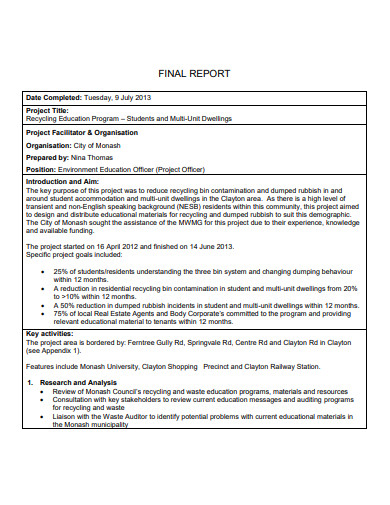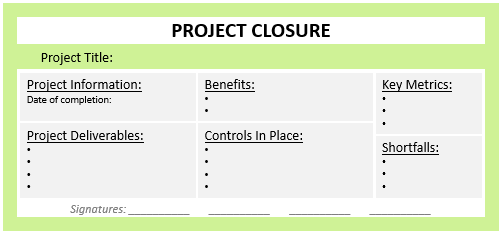
Understanding Project Closure Documentation
Understanding Project Closure Documentation
Have you ever wondered what happens after a project is completed? That’s where project closure documentation comes into play. This essential part of project management ensures that all loose ends are tied up, stakeholders are satisfied, and valuable lessons are learned for future endeavours. In this article, we will explore the ins and outs of project closure documentation, providing you with a comprehensive understanding of its importance and how it contributes to the success of a project. So, let’s dive in and unravel the mystery behind project closure documentation!
Speak to MCTC today about our consultancy advice and training packages.
Understanding Project Closure Documentation
What is project closure documentation?
Project closure documentation refers to the collection of documents and materials that are produced at the end of a project. These documents serve as a record and guide for the project team, stakeholders, and future project managers. Proper documentation ensures that the project’s successes, challenges, and lessons learned are captured, allowing for reflection and improvement in future endeavours.
The Importance of Project Closure Documentation
Project closure documentation plays a crucial role in the overall project management process. Here are some key reasons why it is important:
- Lessons Learned: One of the primary purposes of project closure documentation is to capture the lessons learned throughout the course of the project. By documenting both successes and challenges, future projects can benefit from this knowledge. Lessons learned can include best practices, strategies that worked well, and areas for improvement.
- Evaluation and Accountability: The documentation gathered during project closure allows for a comprehensive evaluation of the project’s performance and outcomes. It helps to assess whether the project achieved its objectives and if the desired outcomes were met. Additionally, project closure documentation helps hold team members and stakeholders accountable for their actions and responsibilities.
- Knowledge Transfer: Project closure documentation ensures that knowledge and information are transferred to future project teams. It provides a repository of information that can be referred to when starting new projects or initiatives. This knowledge transfer helps to avoid reinventing the wheel and promotes continuous improvement across the organisation.
- Legal and Regulatory Requirements: In some industries and sectors, project closure documentation may be required to meet legal and regulatory obligations. This documentation can serve as evidence of project completion, compliance, and adherence to relevant standards or regulations.
Components of Project Closure Documentation
Project closure documentation typically includes the following components:
1. Project Summary
A project summary provides an overview of the project, including its objectives, scope, timeline, and key deliverables. It acts as a high-level reference document for stakeholders and future project managers.
2. Lessons Learned Report
The lessons learned report documents the successes, challenges, and recommendations identified throughout the project. It highlights what worked well and what could be improved in future projects. This report serves as a valuable reference for continuous improvement efforts.
3. Final Project Report
The final project report provides a detailed account of the project’s activities, outcomes, and performance. It includes information on the project’s objectives, scope, budget, timeline, resources utilised, and any deviations from the original plan. This report helps evaluate the project’s success and serves as a reference for similar projects in the future.
4. Project Artefacts
Project artefacts refer to any documentation or materials produced during the project’s life cycle. This can include project plans, status reports, meeting minutes, stakeholder communication, technical specifications, and other relevant documents. Collecting and organising these artefacts ensures that valuable information is retained for future reference.
5. Financial Records
Financial records are a crucial component of project closure documentation, especially for projects with budgetary constraints. These records include the project’s budget, expenditure reports, invoices, and any financial documentation related to the project. Accurate financial records help assess the project’s financial performance and facilitate auditing or reporting requirements.
6. Stakeholder Feedback
Collecting feedback from project stakeholders is important for understanding their perception of the project’s success and identifying areas for improvement. This feedback can be gathered through surveys, interviews, or meetings. Including stakeholder feedback in the project closure documentation demonstrates the project team’s commitment to stakeholder satisfaction and engagement.
Best Practices for Project Closure Documentation
To ensure effective project closure documentation, consider the following best practices:
- Start Early: Begin documenting project closure materials as early as possible in the project life cycle. This allows for the capture of real-time information and reduces the likelihood of missing critical details.
- Involve Key Stakeholders: Engage stakeholders in the project closure process and seek their input on lessons learned and feedback. Their perspectives are valuable for identifying areas of improvement and documenting successes.
- Be Comprehensive: Include all relevant documentation and artefacts in the project closure documentation. This ensures that future project teams have access to a comprehensive record of the project’s activities and outcomes.
- Keep it Organised: Maintain a well-organised and easily accessible repository for project closure documentation. This can be a shared drive, document management system, or project management tool. Proper organisation facilitates knowledge transfer and enables efficient retrieval of information.
- Review and Update: Regularly review and update project closure documentation to ensure its accuracy and relevance. As new information becomes available or as project insights evolve, make necessary updates to reflect the most up-to-date information.

Conclusion
Project closure documentation is a vital aspect of successful project management. It provides a record of project activities, outcomes, lessons learned, and stakeholder feedback. By investing the time and effort to create comprehensive and accurate project closure documentation, organisations can improve project performance, enhance future projects, and promote continuous improvement. Remember to start early, involve key stakeholders, and keep the documentation organised for maximum effectiveness.

